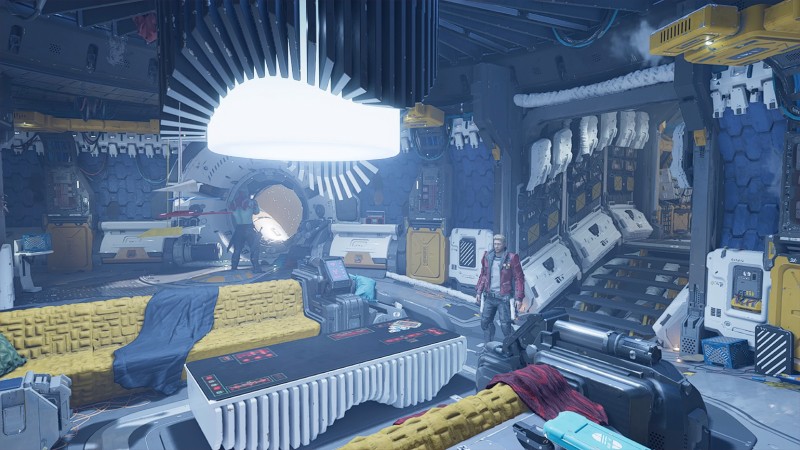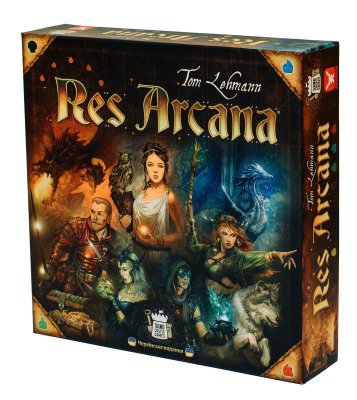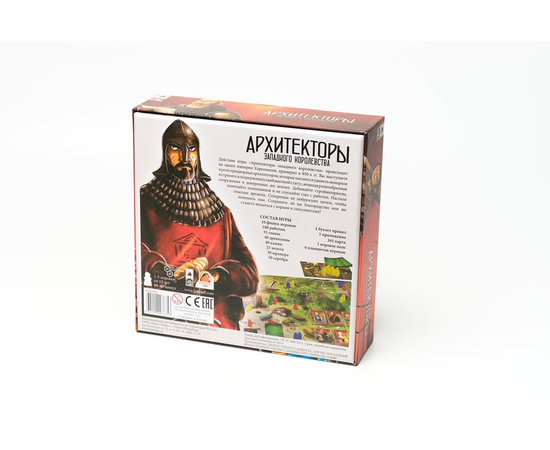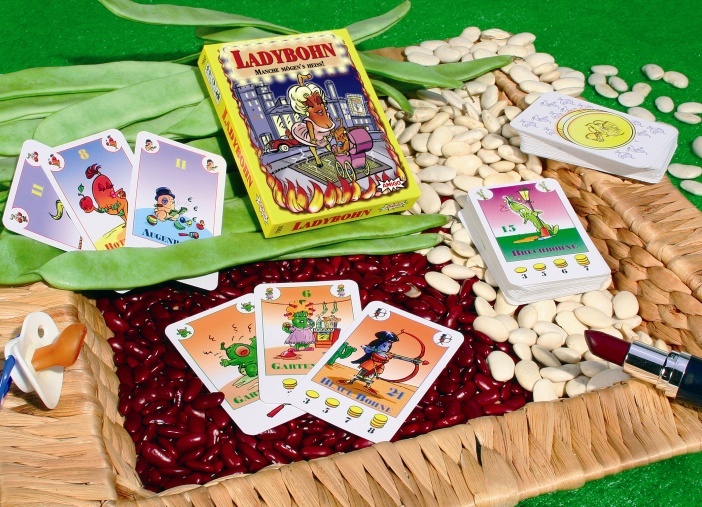End of the Game
The game ends at the end of the 4th round. Each player sums the Victory Points of their Empire. Use the scorepad to facilitate the tally:
Add your “gross” Victory Points: Your Victory Points on cards in your Empire that depend on neither Character tokens nor types of cards.
Add your “combo” Victory Points: Your Victory Points that depend on the number of cards of a certain type that you have.
Add your Generals’ Victory Points: By default, 1 General = 1 Victory Point, to which you add Victory Points granted by certain cards.
Add your Financiers’ Victory Points: By default, 1 Financier = 1 Victory Point, to which you add Victory Points granted by certain cards.
The player with the highest score wins the game. In the case of a tie, the tied player with the most cards in their Empire wins. If there is still a tie, the tied player with the most Character tokens wins. If the tie still persists, the tied players share the victory.
2-player Mode
In a 2-player game, the Draft phase is slightly modified. Instead of dealing 7 Development cards to each player, deal 10.
The draft itself goes in the usual fashion, but when you each have 3 cards left in hand, discard these cards (you do not get the Recycling Bonus) before continuing to the Construction phase.
Thus, just as in a normal game, you each end the Draft phase with 7 Development cards in your Draft area.
No other rules are changed.
Continue Reading
B. Planning Phase
You must make a decision for each Development card in your Draft area.
For each card, you have 2 options:
Slate it for Construction: Move the card into your Construction area (the card is considered “Under Construction”).
Recycle it: Discard the card and collect the card’s Recycling Bonus. Take the Resource from the gameboard and place it either directly on a card Under Construction (see “C. Production phase, 3. Construction”), or on your Empire card.
Note: If recycling a card permits you to place the final construction Resource on another card, this immediately completes its construction.
Place it directly on your Empire card, with its Production visible. It will be able to produce Resources still within this round.
This phase ends once everyone has moved all of their Development cards from their Draft area, either recycling them or slating them for Construction.
A. Draft Phase
Drafting: A game mechanism that allows you to select cards while minimizing the luck factor of the draw. Each player receives the same number of cards, looks at them, chooses one and sets it down, then passes the rest to the player on their left or right (depending on the draft direction).
They repeat this operation with the cards they just received, and so on until all cards are chosen. Drafting allows you to focus your picks for a particular strategy and/or try to weed out cards that would help your opponents.
Deal 7 Development cards face down from the deck to each player.

All players look at their cards, choose 1 that they set face down in their Draft Area, then pass the rest to the player on their…
- left (in rounds 1 and 3).
- right (in rounds 2 and 4).

Everyone simultaneously reveals their chosen card and lays it face up in their Draft area before picking up the cards passed by their neighbor.
Continue like this, drafting 1 card at a time, until each player has 7 Development cards in their Draft area.
Tip: Be aware of the cards you pass to your neighbor: While they may seem useless to you, they could be very powerful for other strategies, and you can always draft cards for their Recycling Bonus.
C. Production Phase
This phase comprises 5 sequential Production steps, one for each type of Resource.
During each step, everyone simultaneously produces the corresponding type of Resource. Production is resolved in the order indicated on the gameboard:
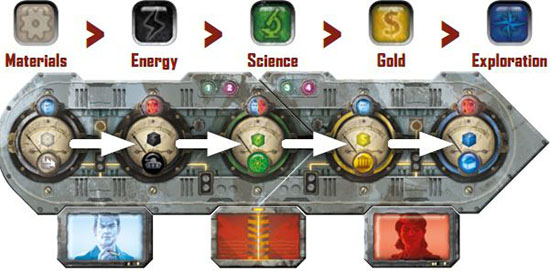
Performing a Production Step
Production
Count the number of icons you produce that match the current Production step. Only count the icons in your Empire (Empire card, and Development cards you’ve constructed); ignore cards Under Construction.
Example: It is the Material () Production step, so each player counts their icons in their Empire. In this case, Benjamin produces 5 Materials .
Note: Some cards have a Production icon that represents a type of card (). This icon counts once for each card of that type you have in your Empire. If you have no cards of this type, the card produces nothing.
Announce your Production total to the other players. If you have produced the single most of this Resource, you earn the Supremacy Bonus and immediately receive the corresponding Character token, which you place on your Empire card.
Construction
Take the number of Resource cubes you counted for Production from the corresponding supply. Immediately distribute them among your cards Under Construction and/or on your Empire card.
You cannot move cubes you have already placed to other cards later.
You cannot save Resource cubes (except Krystallium ) for a later phase or round.
Remember: Resource cubes can only be placed on cards Under Construction or on your Empire card.
Note: The Resources are not limited to the components included.
If you run out of cubes, you can replace cubes on your Empire card with any other cubes, or wait until someone else completes a construction, or even replace cubes already placed with Krystallium cubes.
Once all of the spaces of a card Under Construction are filled, its Construction is complete:
Return all of the cubes / Character tokens on it to their respective supplies.
Collect its Construction Bonus, if it has one.
Add the card to your Empire, placing it on the previous one so its Production icons stay visible.
Note: There is no restriction on construction; you can construct several copies of the same card.
Example: Simon produces 2 which he places on his Wind Turbine, completing its Construction. He places the card on his Empire card, and during the very next Production step (Energy), it will produce 1 .
Construction Bonus: Some cards give you a Construction Bonus and generate Character tokens or Krystallium cubes. Immediately take these Character tokens and Krystallium cubes, and place them on your Empire card (you only get the Bonus one time, when construction is completed).
Transforming cubes into Krystallium: Each time you have 5 Resource cubes on your Empire card (regardless of what these Resources are), immediately discard them to gain 1 Krystallium cube, which you can keep on your Empire card.
You can keep Krystallium cubes indefinitely, and at any time, you can use a Krystallium cube to replace any Resource, or to fill a space requiring Krystallium.
Note: Resource cubes on your Empire card can only be used to produce Krystallium. You cannot retrieve them to place them on cards Under Construction.
Some spaces require Krystallium cubes or Character tokens. You can fill these spaces at any time by placing the appropriate item on them, if you have it in your possession. Unlike Resource cubes, you can wait until later to place them.
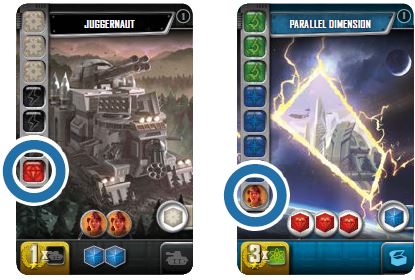
Remember: You can use a Krystallium cube to replace any Resource cube; however, you cannot use it to replace a Character token.
Discarding a card Under Construction: At any time, you can discard one of your cards Under Construction. If you do, collect its Recycling Bonus, placing the Resource on your Empire card.
You lose any cubes and Character tokens that were on the discarded card; they return to their respective supplies.
Careful: This action is not particularly profitable; it is more efficient to recycle Development cards during the Planning phase, because you can place the Recycling Bonus on your cards Under Construction.
This action is only useful to work toward generating Krystallium cubes, using cards you know you can no longer construct.
Note: You keep your cards Under Construction, and the Resources on them from round to round.
Once everyone has placed their Resources appropriately, move on to the next Production step. If this was the final Production step (Exploration), the round is complete. Flip the Round-Tracker token and move it to the next round.
Setup
1 Assemble the gameboard and place the Round-Tracker token on round 1.
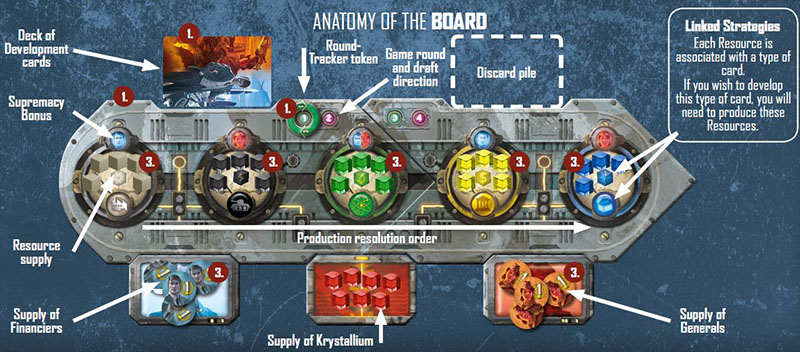
2 Shuffle the Development cards to form a deck, then place it in its notch along the gameboard.
3 Place the Resource cubes and Character tokens on their respective Supply spaces on the gameboard.
4 Choose whether to play with side A or B of the Empire cards (for your first few games, use side A). Deal one Empire card to each player. Everyone must place theirs with the same side up.
5 Lay out your cards in the following manner to organize your play area (see below): Allow sufficient space above your Empire card to place your constructed Development cards.
You also need a Draft area for the current round, and a Construction area (feel free to use a mirror-image layout, depending on whether you are right-handed or left-handed).




